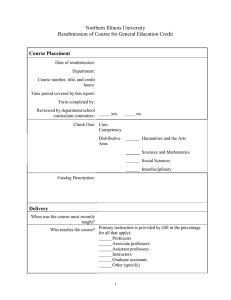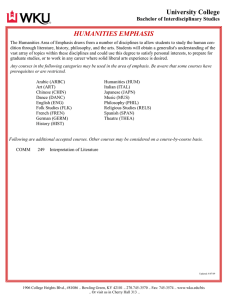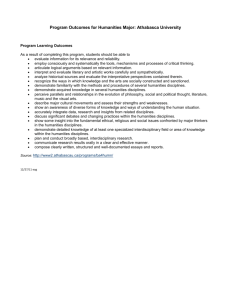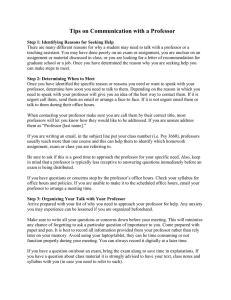resubmission forms
advertisement
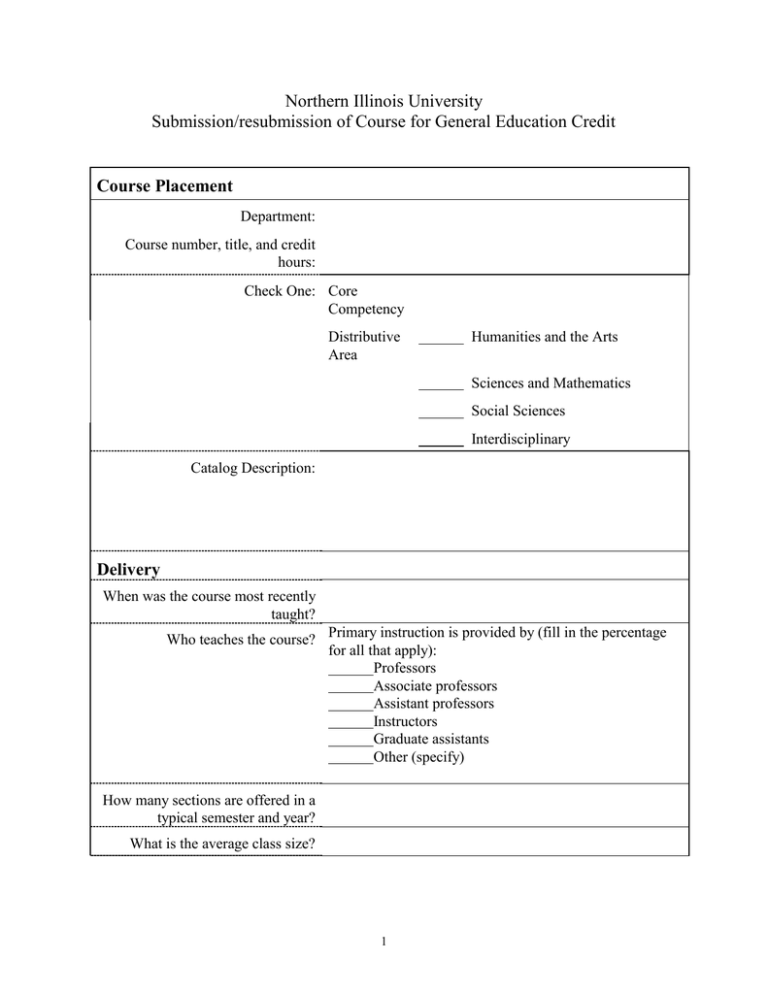
Northern Illinois University Submission/resubmission of Course for General Education Credit Course Placement Department: Course number, title, and credit hours: Check One: Core Competency Distributive Area Humanities and the Arts Sciences and Mathematics Social Sciences Interdisciplinary Catalog Description: Delivery When was the course most recently taught? Who teaches the course? Primary instruction is provided by (fill in the percentage for all that apply): Professors Associate professors Assistant professors Instructors Graduate assistants Other (specify) How many sections are offered in a typical semester and year? What is the average class size? 1 If there are multiple sections, is there a coordinator responsible for facilitating consistency between sections? Relationship to General Education The goals are provided on the following page. What general education goals does the course emphasize? For reporting purposes, highlight no more than three goals. Describe how each goal is assessed in the course? Be as specific as possible. Provide the most recent assessment data available on student attainment of the general education learning goal(s). Include associated rubrics, assignments, embedded test questions, etc. used for performance assessment. How have the assessment data collected in this course been used to make modifications for improvement? Pedagogy Describe how the course is taught. Provide a recent syllabus. If there are multiple sections of the course, is a standard syllabus used? How does the course address issues of accessibility for students with diverse learning styles? To what extent, if any, does the course incorporate a multicultural perspective in philosophy, content, methods, or people? 2 General Education Goals The General Education program at NIU will help students attain a sound liberal education and acquire sufficient general knowledge and intellectual versatility to enable them to become informed and resourceful members of society. The four broad learning goals of the general education program are: a. Students develop habits of writing, speaking, and reasoning necessary for continued learning. i. Students communicate clearly in written English, demonstrating their ability to comprehend, analyze, and interrogate critically. ii. Students communicate in a manner that unites theory, criticism, and practice in speaking and writing. iii. Students perform basic computations, display facility with use of formal and quantitative reasoning analysis and problem solving, and interpret mathematical models and statistical information. iv. Students are able to access and use various information resources. b. Students develop an ability to use modes of inquiry across a variety of disciplines in the humanities and the arts, the physical sciences and mathematics, and the social sciences. i. Students demonstrate a knowledge of the historical and prehistorical development of societies and cultures, and of the relations of such development to the present. ii. Students demonstrate an ability to articulate the significance of the arts and an ability to apply analytical and interpretive skills to the critical examination of the social/cultural values and aesthetic qualities found in the arts and popular culture(s). iii. Students demonstrate a knowledge of the cultural traditions and philosophical ideas that have shaped societies, civilizations, and human self-conceptions. iv. Students demonstrate an understanding of the scientific method and an ability to use scientific methods and theories to understand the phenomena studied in the natural and social sciences. c. Students develop an understanding of the interrelatedness of various disciplines by integrating knowledge from several disciplines and applying that knowledge to an understanding of important problems and issues. d. Students develop social responsibility and preparation for citizenship through global awareness, environmental sensitivity, and an appreciation of cultural diversity. 3
